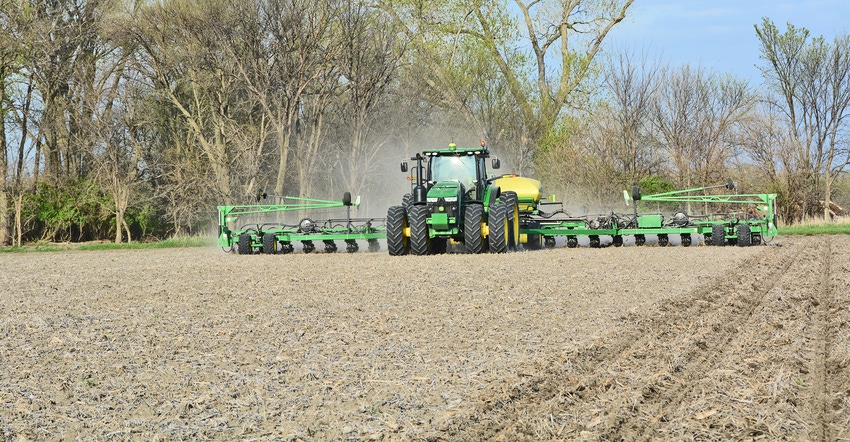
If corn planting is delayed, when should you switch to an earlier relative maturity hybrid?
"I have always said that if you can get your full season hybrid planted by May 25 you should be fine, and I would not recommend switching to an earlier maturity," says Aaron Ahrenholz, a regional agronomist with Producers Hybrids.
In the Upper Midwest, if your planting gets delayed until the following week (May 26-31), he recommends switching to a hybrid that is five days earlier than the one you originally had planned on planting.
If you get delayed past June 1, then switch to a hybrid that is 10 days earlier than the one you originally had planned to plant.
“The wild card in all of this goes back to Mother Nature,” he says. “None of us know what kind of summer we will have. Will it be wet and cool, or hot and dry?”
1 bushel rule
University studies in the Upper Midwest show a loss of about 1 bushel per acre loss in yield per day when planting gets delayed past May 5-7.
“Keep in mind that a poor seedbed at planting, even if it is in the desired planting dates, will have a more adverse effect on grain yields than if you were to wait for good soil conditions,” Ahrenholz says. “If the seedbed is wet and cool, this can result in compaction, delayed emergence and the potential for seed rot and diseases to occur.”
The fall frost date is also something to consider. In the northern part of your state, the frost date will be earlier in the fall in the southern half, thus reducing the number of days that you will be able to collect growing degree-days (GDDs) to get the corn plant to maturity.
Another factor is the number GDDs that a hybrid typically needs to reach physiological maturity (black layer). It will change when planted later in the season. On average, for every day after May 1 that a hybrid is planted, it requires 1.6 fewer GDDs to reach flowering and 6.8 fewer GDDs to reach black layer. Therefore, a hybrid planted on May 25 may need 136 less GDDs to reach black layer than the same hybrid planted on May 5 (20 days times 6.8).
Although the corn plant may adapt to the amount of GDDs it needs to get to black layer, the grain fill period will shorten in the hybrid. Usually a shorter grain fill period will mean a lower yield potential.
Although the penalty for late planting is important, be careful to avoid tillage when soil is too wet, Ahrenholz advises. Yields may be reduced somewhat at first, but effects of soil compaction can reduce yields for several years to come.
More factors
According to the South Dakota State University Extension Service’s guide to best corn production practices, the decision on when to switch hybrid maturity also depends upon:
1. Your desire to accept risk. Longer season hybrids offer the highest yield potentials, but may also increase drying costs or delay harvest.
2. Potential use. For dry grain, relative maturities should be shorter-season within the maturity range for the latest acceptable planting date. For ear corn, high moisture corn and silage, relative maturities should be longer-season within the maturity range for the latest acceptable planting date.
3. Field conditions. Shorter-season hybrids within the maturity range for the latest acceptable planting date should be selected when field conditions include heavy crop residue, reduced tillage and heavy soil textures.
4. Hybrid dry down and grain quality characteristics. Longer-season hybrids within the latest acceptable planting dates should have fast grain dry-down and high test weight characteristics.
5. Seed availability. How easy is it to trade original hybrids for superior shorter-season alternatives?
No matter what the weather is right now, it is a good idea to make a plan and to be prepared if planting is delayed, Ahrenholz says.
About the Author(s)
You May Also Like






